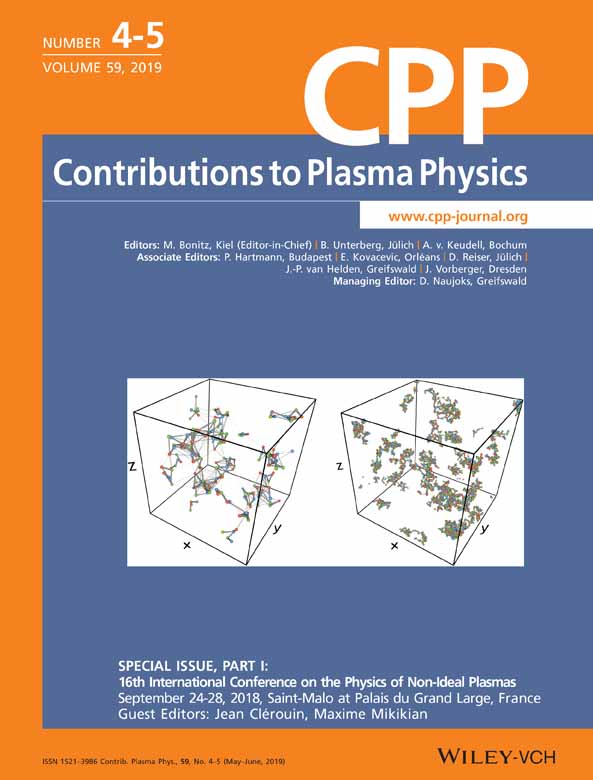Enhancement factor of nuclear reactions in partially ionized plasmas and asymmetric mixtures
Abstract
When hydrogen is mixed with heavy (high-Z) elements, even as traces, such as iron in the sun, the plasma mixture transits from a weakly coupled state to the intermediate coupling regime of simultaneous weak and strong couplings due to charge asymmetry. In those circumstances, partial ionization is an important aspect to consider. We present a global approach for evaluating enhancement factors for thermonuclear reactions in such mixtures. We grounded our approach on extensive orbital free molecular dynamics (OFMD) simulations of hydrogen-silver mixtures, chosen as a prototype of hydrogen—high-Z mixtures, in a large range of temperature (100 < T < 1600 eV). By comparing a series of OFMD simulations to hyper-netted chain calculations of effective binary ionic mixtures (eBIM), we set a general procedure for computing enhancement factors. The electron screening contribution is also included implicitly in the definition of the effective ionizations within the average atom framework. The agreement between the pair distribution functions of OFMD and eBIM validates a prescription in which each average atom representing a given species shares the same external electron density with the others (iso-ne rule). We checked that an interpolation formula between weak and strong couplings in BIM, due to Chugunov and DeWitt, is accurate enough to address the limit of extreme dilution of a heavy element.




